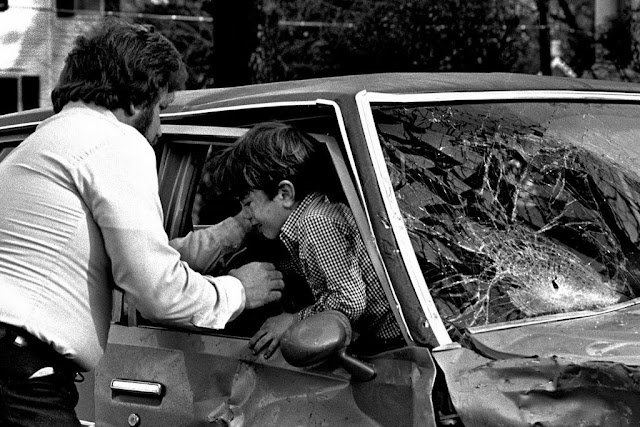 |
| Girl worker in Carolina Cotton Mill, 1908 photo by Lewis Hine |
 |
| Spinner in Vivian Cotton Mills, Cherryville, N.C. photo by Lewis Hine |
Hine understood that photography was a tool that helped him convey a passion in a subject. Photography was not to be the end result for Hine. He wanted the country to see the conditions that children were being asked to work in for what was basically a slave labor role.
 |
| Photo I took while working at The Hickory Daily Record |
It didn't take long before I realized I had very few ideas. I then took an idea from my family of ministers. They often preached on themes.
I started thinking of what city workers did each day for us. I then thought of what are some of the hardest jobs to have on a hot day.
What I was doing was searching for a subject. Over time I learned how to do a better job of finding subjects.
- Get a notebook and carry it with you. Make a list of things that interest you. Start with things that you know a lot about. The best place is to start with your hobbies and interests.
- Find three or four topics that interest you. The first mistake many of us make is picking just one subject to start with. It is important to select more than one subject from the start. Go to the library or an Internet-connected computer at home and conduct a preliminary search of each topic.
- Determine which project idea can be supported with plenty of published material. This way, you will be able to select a final topic that is both interesting and feasible.
- Must be visual. When you first do this you will most likely scratch off things that later in your career you would put back. At first figuring out how to photograph abstract thoughts like philosophy will not make the cut, but later as you get better you will discover a new way to capture those thoughts.
- Must be ongoing. You really need a subject that you can revisit over and over to fully explore all the possibilities. A good subject will be thought provoking. As you edit your photos and think about what you are trying to say about the subject that you find better ways to communicate.
- Of interest to an audience. You cannot be self centered or your audience is one. If this is overemphasized you become like the paparazzi who tracks celebrities due to the audience willing to pay a lot for access to the subject. David Hurn says in the book On Being a Photographer, "So there is a very fine line between pandering to popular appeal and a respectful consideration of viewers'/listeners' attention-span or interest in the content."
 |
| This is a group of illegal immigrants just across the border from New Mexico in Mexico as they prepare to cross with the help of a coyote. |
One of my subjects is missions. One of the subjects within missions is helping people. Lately I have become more aware of the problems with illegal immigration. What are the causes for this to be happening to people?
While I know the problem is super complex I do know one of the root causes is lack of opportunity where someone lives and they look for a place that can sustain them.
A few years ago I covered one part of this by digging deep into the coffee growers in Mexico that were crossing the border illegally. Hard to understand when global coffee consumption is second to crude oil. The number 2 commodity in the world and yet as I drink my $5 cup of coffee we had illegal coffee farmers here because they could not support themselves or their families.
I am returning to do a follow up story this fall. Here is my first package I produced to help this cooperative spread their message. It has helped all the cooperative farmers to remain in Mexico and not just get by but thrive.
 |
| In Mexico the peak time to pick coffee is November through March. |
I am going early November due to the weather being the best time for travel.
Access to the process requires me to work with the coffee growers and work with a translator since I do not speak Spanish.
There are two main stories I want to capture on this trip in some various ways. I want to show how this is high end coffee and tell the story of the coffee itself. Also, I think the story of how coffee is impacting the families of the coffee growers.
Why these two threads? Well I have discovered from reading books by Seth Godin and others.
Seth Godin says create a story that shows how you're different which helps to earn you the right to sell to people. Then the second thing he stresses is to sell the story rather than the product. Too many make the mistake of thinking buyers base their decisions on logic. People pay up to $5 a quart for bottled water because (so the story goes) it's "healthier" than tap water.

No comments:
Post a Comment